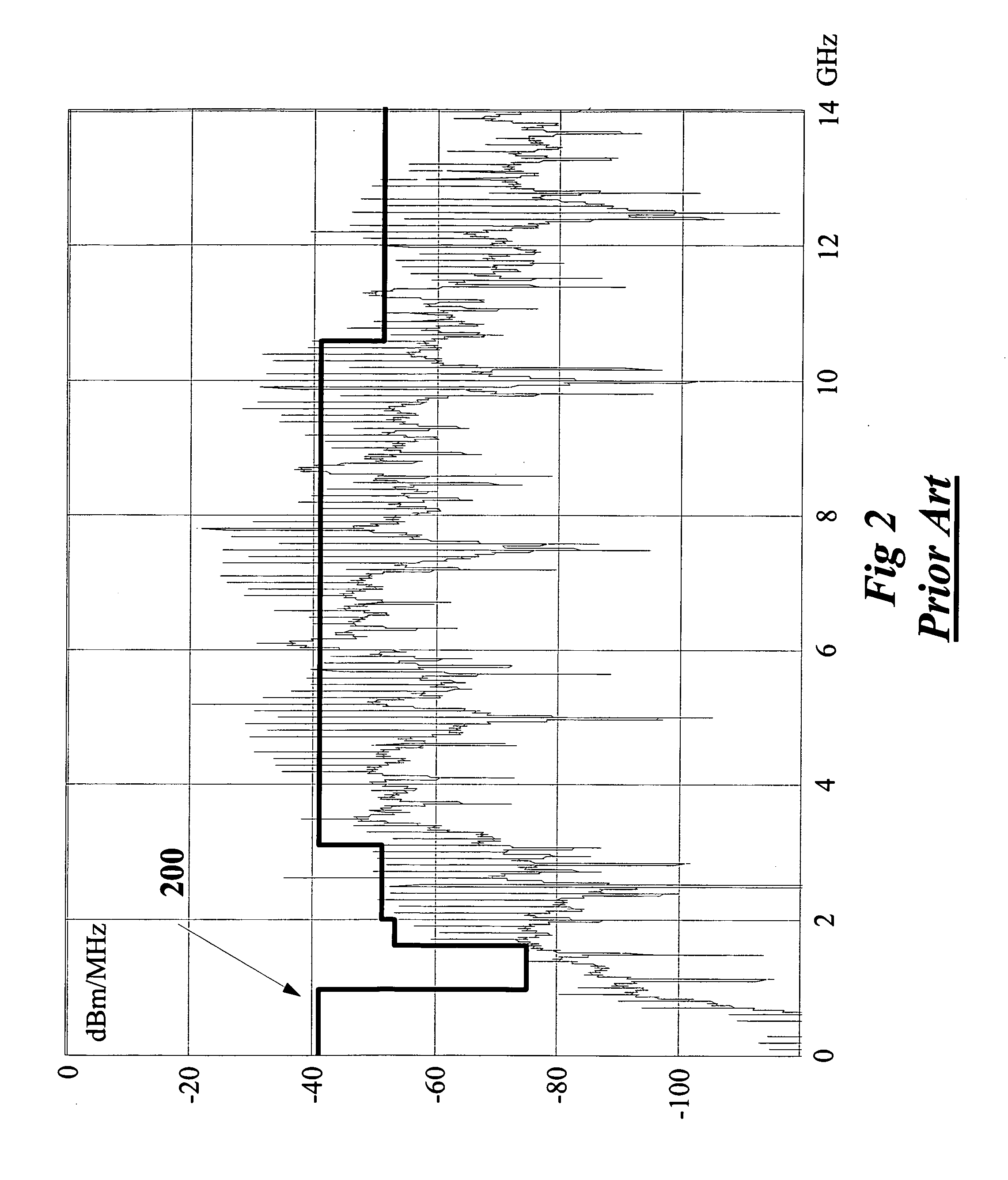Randomly changing pulse polarity and phase in an UWB signal for power spectrum density shaping
a technology of power spectrum density and random change, applied in the field of wireless communication, can solve the problems of power reduction, decrease and achieve the effect of reducing the performance and range of the signal
- Summary
- Abstract
- Description
- Claims
- Application Information
AI Technical Summary
Benefits of technology
Problems solved by technology
Method used
Image
Examples
Embodiment Construction
[0051] To solve the problem of discrete frequency components in a spectrum of an ultra wide bandwidth (UWB) radio signal, the invention inverts randomly the polarity of the signal. The resultant signal with randomly inverted polarity is compliant with FCC regulations. It should be noted that the polarity randomization can be applied to pulses, to subparts of symbols, to an entire symbol, and to groups of symbols. Subparts of a symbol can be chips of spreading sequences and elements of codewords of a modulation scheme. This random polarization enables the invention to eliminate spectral lines and to shape the power spectral density of the signal.
[0052] To solve the problem of shaping a spectrum of an ultra wide bandwidth (UWB) radio signal, the invention inverts randomly the polarity of the signal. The resultant signal with randomly inverted polarity can more closely approximate a prescribed spectral mask, the FCC power spectral density (PSD) mask 200 of FIG. 2, than a signal withou...
PUM
 Login to View More
Login to View More Abstract
Description
Claims
Application Information
 Login to View More
Login to View More - R&D
- Intellectual Property
- Life Sciences
- Materials
- Tech Scout
- Unparalleled Data Quality
- Higher Quality Content
- 60% Fewer Hallucinations
Browse by: Latest US Patents, China's latest patents, Technical Efficacy Thesaurus, Application Domain, Technology Topic, Popular Technical Reports.
© 2025 PatSnap. All rights reserved.Legal|Privacy policy|Modern Slavery Act Transparency Statement|Sitemap|About US| Contact US: help@patsnap.com



